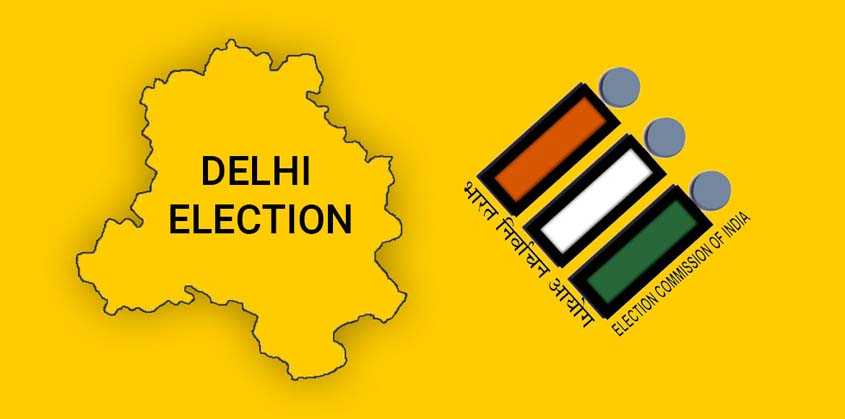There is speculation about polarisation between Hindus and Muslims on the eve of the crucial election.
A comment made by Kapil Mishra, the BJP nominee from Model Town, who was formerly with the Aam Aadmi Party (AAP), that the Delhi elections could be viewed as a contest between India and Pakistan perhaps is a masked warning to the opponents of the Sangh Parivar. It is clear that certain elements in the BJP, which is on the back foot in the run-up to the polls, would want to give a communal shade to the confrontation, so as to consolidate the Hindu vote.
The overall perception is that the AAP is far ahead of both its opponents, and poised to retain control of the government since it has over the past five years had quite a good run. Mishra also alluded to the Shaheen Bagh protests going on for the past 45 days or so, and described these agitation sites as “mini Pakistan” being generated by the AAP and Congress.
The BJP, in the ongoing elections, is desperately looking for an issue to halt the AAP’s campaign and also rope in factors that are extraneous and not directly related to local matters. Most of the BJP nominees, including Mishra, are finding it excessively difficult to off-set the impression that favours AAP, and therefore have sought to introduce emotional components that can arouse passions and probably get the BJP back into the game.
“Shaheen Bagh” has become a symbol of overall opposition to the Citizenship Amendment ACT (CAA) and is being replicated in several parts of the country. The kind of attention this unique peaceful protest has evoked indicates that though the law may have been enacted by Parliament, yet the government has to convince ordinary residents in order to garner a wider acceptance for this Act. The perplexing matter is that no attempt has been made by the Centre or any of its emissaries to allay the fears of those who are sitting on a placid dharna.
On the contrary, there is speculation that the agitators would be forcibly evicted, closer to the polls, so that it could lead to a polarisation between Hindus and Muslims on the eve of the crucial election. Undoubtedly, there are certain inconveniences being caused by the road blockades, but all that is needed to clear the way for the traffic is to hold a dialogue with those on the dharna and clear their apprehensions. Apparently, the government is unwilling to do this.
By not visiting the protest site, while expressing his criticism of the CAA, Delhi Chief Minister Arvind Kejriwal has avoided the possible trap set for him. Kejriwal is contesting the polls on the issue of good governance by his government, a fact that has wide acceptance. If he is seen visiting the Shaheen Bagh area, the BJP would accuse him of stoking communal passions, and may also attempt to implicate him in the recent violent incidents that took place at Jamia Millia Islamia. The AAP leader has ensured that the BJP’s ploy of demarcating this election
The fact of the matter is that the AAP is in complete control of the narrative and has not allowed the focus to shift from Delhi to any other emotive issue. Over a period of time, Kejriwal has evolved as a prudent politician and thus consciously is not repeating the mistakes he had made in the past. He is also aware that the Congress and the BJP have entered the fray with little preparation and thereby is eager to take advantage of this opportunity.
The general impression is that both the BJP and the Congress have surrendered to AAP and are mentally prepared to face defeat. This is evident from the fact that the two parties have put up extremely weak candidates, both against the Chief Minister and his deputy, Manish Sisodia. The result being that both Kejriwal and Sisodia could win rather effortlessly. The signal that has gone out is that the intent of winning is lacking in the two national parties since they have allowed the AAP’s top two to get away without any confrontation.
Going by the list of candidates put out by the Congress and the BJP, it appears that the two outfits are using the polls to focus on the Bihar elections that may follow later. The Congress allotted four seats to the RJD while the BJP has accommodated the JD(U) in a few constituencies, while breaking its alliance, with the Akali Dal. This in any case is bad politics, since this over emphasis on the section of Poorvanchali voters, may deprive them of support from its core support base. Interestingly, the JD(U) nominee from Sangam Vihar, had twice lost the polls on a BJP ticket.
The AAP, too, has its shortcomings cum flaws, and there is some trouble in its organisation. However, the dissent has not surfaced much primarily because it is expected to triumph once again. Many political observers believe that it would not be surprising if the AAP nearly replicates its victory of 2015. The Congress may get none or a few seats, but its list appears to be a cut above the BJP, which is considered to be the main challenger to the AAP supremacy. It is unexplainable why the BJP has not fielded some of its well-known faces such as Vijay Goel, Vijay Jolly, Aarti Mehra and Shazia Ilmi. At this stage, the match is heavily tilted towards AAP. Between us.

